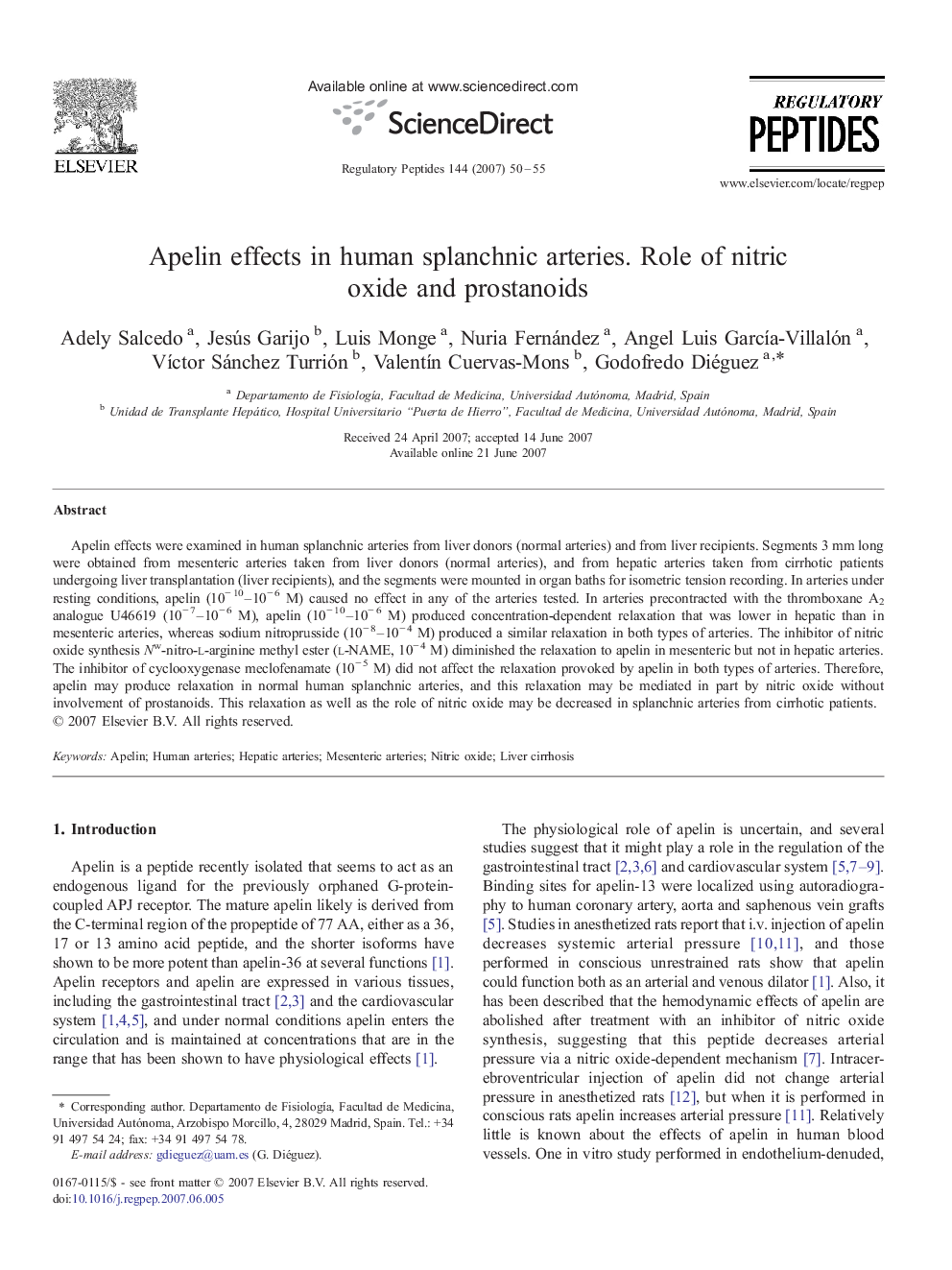| Article ID | Journal | Published Year | Pages | File Type |
|---|---|---|---|---|
| 2023348 | Regulatory Peptides | 2007 | 6 Pages |
Apelin effects were examined in human splanchnic arteries from liver donors (normal arteries) and from liver recipients. Segments 3 mm long were obtained from mesenteric arteries taken from liver donors (normal arteries), and from hepatic arteries taken from cirrhotic patients undergoing liver transplantation (liver recipients), and the segments were mounted in organ baths for isometric tension recording. In arteries under resting conditions, apelin (10− 10–10− 6 M) caused no effect in any of the arteries tested. In arteries precontracted with the thromboxane A2 analogue U46619 (10− 7–10− 6 M), apelin (10− 10–10− 6 M) produced concentration-dependent relaxation that was lower in hepatic than in mesenteric arteries, whereas sodium nitroprusside (10− 8–10− 4 M) produced a similar relaxation in both types of arteries. The inhibitor of nitric oxide synthesis Nw-nitro-l-arginine methyl ester (l-NAME, 10− 4 M) diminished the relaxation to apelin in mesenteric but not in hepatic arteries. The inhibitor of cyclooxygenase meclofenamate (10− 5 M) did not affect the relaxation provoked by apelin in both types of arteries. Therefore, apelin may produce relaxation in normal human splanchnic arteries, and this relaxation may be mediated in part by nitric oxide without involvement of prostanoids. This relaxation as well as the role of nitric oxide may be decreased in splanchnic arteries from cirrhotic patients.
